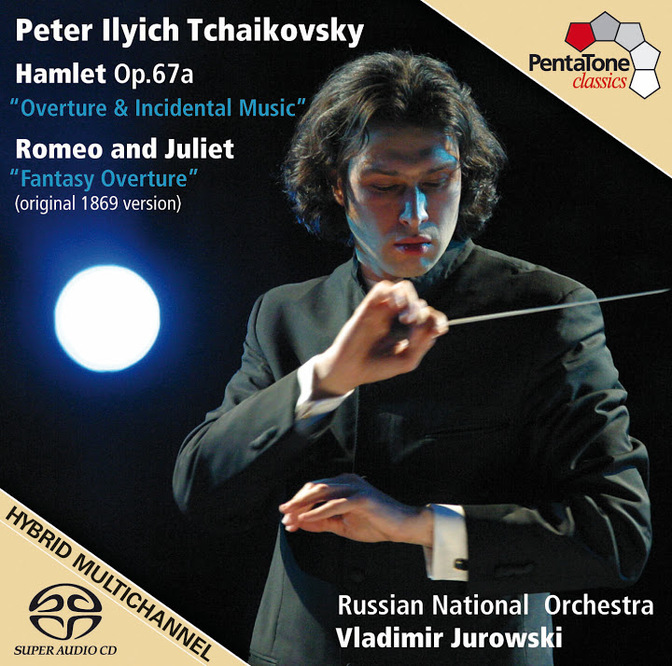CD1
Hamlet op. 67a - Overture & Incidental Music
Romeo and Juliet
Album information
There were not many composers of standing, who worked equally hard on absolute and programme music. And of those composers, only few were destined to achieve extraordinary results in both genres. One if them was Peter Ilyich Tchaikovsky. Probably his passion for reading stood him in good stead when inspired by high literature, after all, Tchaikovsky considered “reading as ranking amongst the greatest moments of happiness”. In his programmatic works, he did not try to elaborate on a literary programme or the detailed portrayal of a plot; rather, he was attracted to the psyche of the figures depicted, to the development of the characters, or, for instance, to the emotional impasses and whirlpools, into which they manouvred themselves, or into which they were drawn.
Anyhow, Tchaikovsky used three plays by the great Shakespeare on which to model various works: The Tempest, Romeo and Juliet and Hamlet. He turned them into a symphonic fantasy (The Tempest, Op.18), two fantasy-overtures (Romeo and Juliet, and Hamlet, Op. 67) and incidental music (Hamlet, Op,67 bis). Just like many other composers, Tchaikovsky was inspired by a disastrous love, which let him to ruin. It is interesting to note that the young composer bu Mili Balakirev. Balakirev suggested that Tchaikovsky use Shakespeare’s “Romeo and Juliet” as a model for his following work – he probably knew about Tchaikovsky’s unrequited love for the Belgian soprano Désirée Artôt and assumed that the story of the famous Shakespearian lovers would encourage him to get down to the composition.
Tchaikovsky began work without any huge enthusiasm, following Balakirev’s detailed composition instructions: “Begin with the music portraying Friar Lawrence, then interrupt it with the quarrel between the sparring families and then depict the young lovers.”
In November 1869, Tchaikovsky completed the first version (which is the one recorded here by the PENTATONE label) of his Fantasy-Overture “Romeo and Juliet”. At Balakirev’s advice, two further versions then followed (1870, 1880); and it was to take over another ten years, until Tchaikovsky was completely satisfied with his work. When planning the music, Tchaikovsky concentrated on the tree main elements of the drama, which he translated into sonata movement form.





